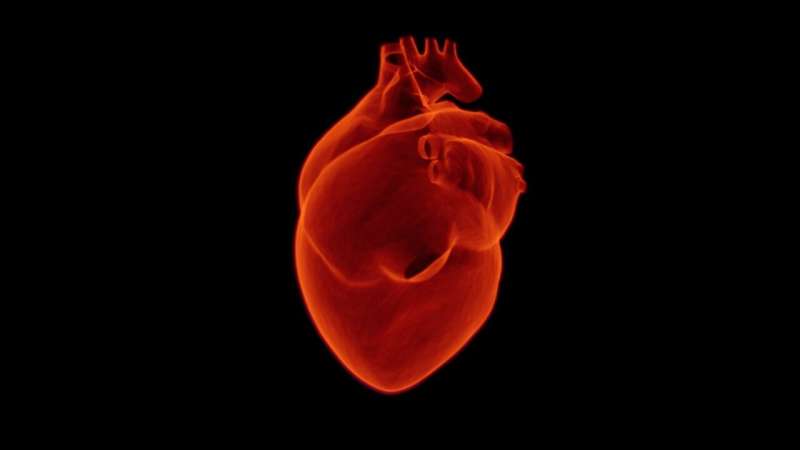This article has been reviewed according to Science X's editorial process and policies. Editors have highlighted the following attributes while ensuring the content's credibility:
fact-checked
peer-reviewed publication
trusted source
proofread
New discoveries about where atherosclerotic plaques rupture can lead to preventive treatments

A common cause of myocardial infarction and stroke is the rupture of atherosclerotic plaques. The exact location of plaque ruptures has previously been unknown, but now researchers at Lund University have mapped this. The research team has also identified an enzyme, a marker, that they hope will help predict who is at risk of having a myocardial infarction or a stroke due to a ruptured atherosclerotic plaque.
In atherosclerosis, fat is accumulated in the artery walls creating atherosclerotic plaques. Plaques that rupture can cause a stroke or myocardial infarction, and a deeper understanding of the mechanisms underlying plaque rupture is needed to prevent serious complications. Research at Lund University, Sweden, now shows that atherosclerotic plaques in the carotid arteries often rupture at the beginning of the plaque, at a location closest to the heart. The study has been published in the Journal of the American College of Cardiology (JACC).
"In our study, we were able to pinpoint exactly where plaques rupture. This is an important step, allowing for a better understanding of why they rupture. Previous studies have focused more on how plaques are formed while we have studied the precise area where they rupture, which no previous human study has done," says Isabel Goncalves, who led the study.
Important patient groups
She is professor of cardiology at Lund University and a senior consultant at Skåne University Hospital (SUS) in Sweden. The research is based on studies of atherosclerotic plaques in the carotid arteries from a total of 188 individuals. The researchers used electron microscope and RNA sequencing techniques to get a detailed picture of the location where most plaques rupture. High blood pressure and type 2 diabetes are factors that increase the risk of atherosclerosis, and therefore these patient groups were also included in the study.
"One of the strengths of our study is that it's based on a close collaboration between clinically active researchers and experts in bioinformatics. We have also used several different techniques to allow as detailed analyses as possible. It was important to us to include people with type 2 diabetes in the study as this is a group with high risk of dying from complications related to atherosclerosis compared to the rest of the population," says Jiangming Sun, researcher in bioinformatics at Lund University and first author of the paper.
Marker for complications
The RNA sequencing showed a strong association between the enzyme MMP-9 and the area where plaques rupture. High levels of MMP-9 could also be associated with an increased risk of future cardiovascular disease in individuals with atherosclerosis. The researchers hope to be able to use MMP-9 as a marker to predict which patients are at risk of having a myocardial infarction or a stroke. They are also investigating whether it is possible to develop new treatments that reduce the risk of plaque rupture.
"Our study shows that MMP-9 is a marker of future cardiovascular complications. In further studies, we want to investigate if it's possible to inhibit the enzyme, so it becomes less active and thus prevent plaque rupture. However, it's important that such treatment does not lead to unwanted side effects as the enzyme has other important functions in the body," says Isabel Goncalves.
Preventive measures
For several years, Isabel Goncalves has worked to learn more about what happens when plaques rupture together with her clinically active research colleague Andreas Edsfeldt at Lund University, also a physician at Skåne University Hospital. As physicians, they see a lot of patients they would like to help at an earlier stage than what is possible today.
"We see a lot of patients who have had a heart attack or have become partially paralyzed following a stroke and can no longer live life as they used to. Often, atherosclerosis does not cause symptoms at an early stage so it can take years before the disease is noticed. Sadly, those of us who work clinically discover the plaque too late, when it has already ruptured and caused serious complications like sudden death, heart attack or a stroke. If we can learn more about the underlying mechanisms, we can initiate preventive measures or treat the dangerous plaques in time," says Isabel Goncalves.
More information: Jiangming Sun et al, Spatial transcriptional mapping of human atherosclerotic plaques reveals site-specific pathways underlying plaque rupture, Journal of the American College of Cardiology (2023). DOI: 10.1016/j.jacc.2023.04.008




















